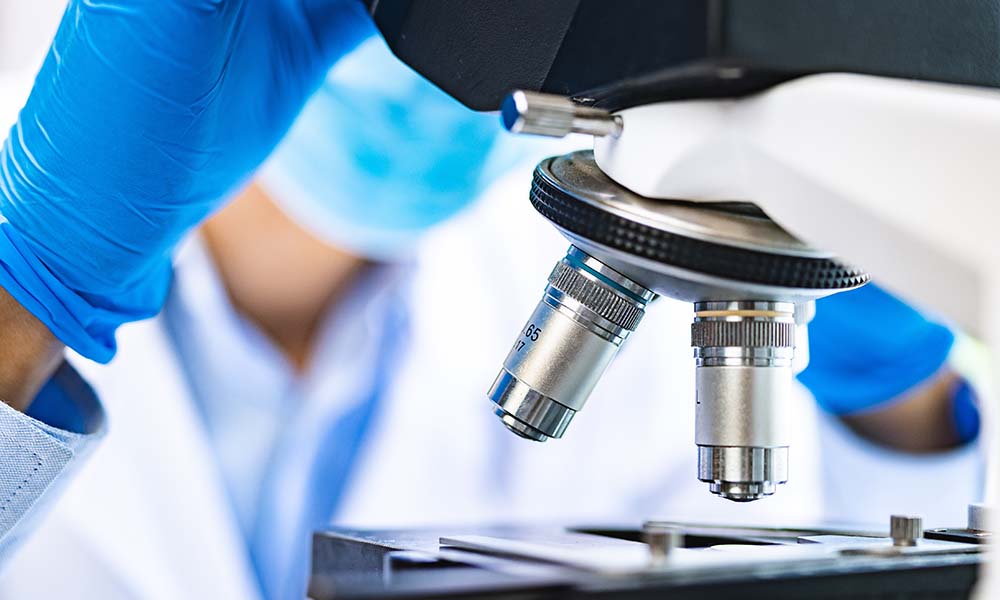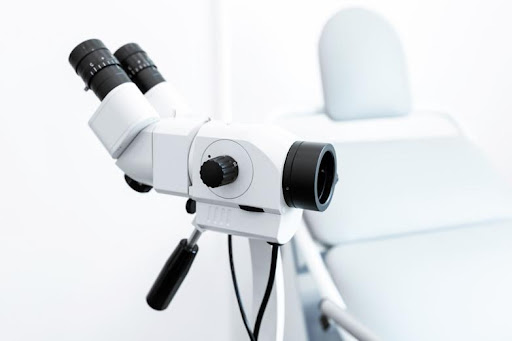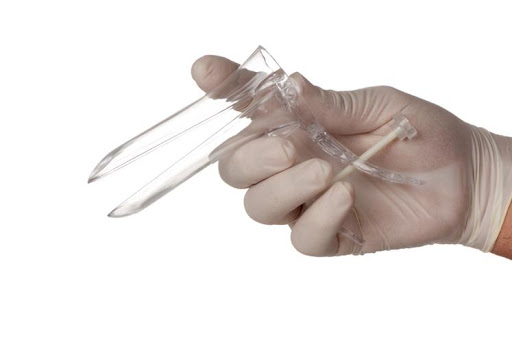


You have been referred to us by your healthcare provider because you have recently undergone screening of your cervix looking for Human Papillomavirus (HPV) and the atypical cells that HPV can cause. We need to look closely at your cervix, as well as your vulva, vagina and anus, to assess how significant the abnormality is. This examination is called a colposcopy and is performed in our unit using a special microscope called a colposcope. HPV-infected and precancerous cells can usually not be seen with the naked eye, so it’s necessary to use this specialised tool.


We will need to insert a special instrument into the vagina called a speculum, which helps us see the cervix and vagina. You will be familiar with this instrument, as it was used to collect the pap smear sample. It stretches the vagina wide, which can be uncomfortable, especially initially as it is opened.
We then apply a cotton ball soaked in 3% acetic acid, similar to table vinegar, to the cervix and leave it there for a couple of minutes. This helps reveal any HPV-infected areas by turning them white. We use various criteria to establish whether these areas are merely infected with HPV (what we call a low-grade squamous intra-epithelial lesion or LSIL, implying merely HPV-infected cells or even mildly precancerous cells) or whether they have developed into more significantly precancerous cells (high-grade squamous intra-epithelial lesion or HSIL, implying moderately or severely precancerous cells). We may also use a brown liquid called Lugol’s iodine in a similar way, so please inform us if you are allergic to iodine/shellfish.
We will then take 1 or 2 (up to 4) biopsies from the most obvious areas, as these will represent the worst of the infection. The biopsies may be painless but usually feel like a pinch. Local anaesthetic is usually not necessary for only one or two quick biopsies. Sometimes the uterus contracts a little during and after the procedure, which may feel like period pain, for which an anti-inflammatory, like ibuprofen, should suffice for pain relief. It is advisable to take a couple of painkillers like ibuprofen one hour before the procedure, which is readily available over the counter.
If you are prone to fainting when blood is taken, please let us know beforehand, as you may need an oral sedative an hour before your appointment. In this case, you will also need an accompanying person to drive you to and from your appointment.
Once we have taken the biopsies, we then use long match-like sticks, the tips of which carry a chemical called silver nitrate, to cauterise the areas of the cervix that have been biopsied so that you do not have large amounts of bleeding from the biopsy sites. Sometimes this can burn a little and cause some period-type pain. It can also leave an ashy silver/black colour that you may notice in your vaginal discharge after the procedure.
You will have some vaginal spotting or light bleeding for a few days, even up to two weeks after the procedure. This is part of the normal healing process of the biopsy sites. During this time, you may not use tampons, swim or engage in penetrative sex play, as this can disrupt the biopsy scabs, causing bleeding or increasing the risk of infection. Showering is preferred to bathing for the same reason.
Once the bleeding has disappeared (bearing in mind that it may be prolonged by the onset of your normal menstruation, depending on where you are in your menstrual cycle), you can then be reassured that the biopsy sites have healed, and you may return to normal penetrative sex play and tampon use. Please let us know at any stage if you have any queries or if there is anything you are worried about.
Colposcopy is an art and can be unreliable on its own, which is why a biopsy is almost always necessary, as this is the most accurate test. The biopsies are sent to the laboratory where a doctor called a pathologist looks at prepared slices of the tissue under the microscope to comment on whether this is LSIL, HSIL or, very occasionally, an invasive cancer in an early stage and therefore not visible to the naked eye.
We will inform you within a week of your result and provide guidance regarding the way forward. We will either send you an SMS or call you with your results, as well as email a report to you and your referring doctor.
If there is only a mild precancer present, there is no need for treatment, and we will ask you to return to your referral doctor for a repeat Pap smear and HPV test in 6 to 12 months. If there is a severe precancer, we will ask you to return to the unit after 2 weeks for an LLETZ treatment under local anaesthesia or occasionally refer you back to your referring doctor for an LLETZ under general anaesthetic in theatre.
We prefer not to treat minor HPV infections or early precancers with an LLETZ/LEEP in young women unless persistent over several years, as 70% of these abnormalities resolve on their own.